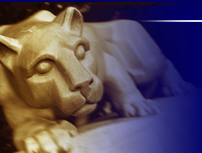Commentary (continued)
Biological changes during puberty are quite comprehensive, covering the many physical changes the body goes through. The young person grows in height and weight, his or her reproductive organs mature, friendships change, and, during the course of these changes, the self-image must also change. Adaptation to the changes can be a key factor in the success of traversing the waters of adolescence.
The cognitive changes of adolescence include the acquisition of new abilities, more sophisticated thinking, and formal thinking processes. An adolescent is able to plan ahead; argue abstract concepts; solve problems in relationships; and think about political, religious, and philosophical issues. Oftentimes, adolescents can become extremely ìmoralî in their judgment of othersí behavior. A good example would be the activist demonstrations against the Vietnam War during the 1960s. They are able to understand ethical issues and hypothetical situations in a way that was impossible when they were children.
Social changes encountered by the adolescent reflect the changes in relationships as they mature from children to adults. In some cultures, social changes are marked by rites of passage, such as the Bar Mitzvah. As adolescents enter new roles of work, marriage, and change of residence, this alters their self-image and has an impact on their relationships with family and friends.
By the contexts of adolescence we mean the environments that shape the young person. These include family, peers, school, work and leisure, and other experiences. For example, puberty can affect individuals in largely different ways. The experience of feeling attractive or unattractive, fitting in or feeling different, and maturing early or late, can color the transition of puberty for the adolescent.
Taking a look at how the different contexts can affect the adolescent, the text first focuses on families, and factors such as divorce, single parents, working mothers, moving, and step-families and their effects on adolescent development. There is quite a bit of recent research in these areas, and those of you who enjoy cruising the Web may choose to explore some ìhot-off-the-pressî findings. Peer groups tend to change through adolescence from same-sex groups to groups containing males and females, and finally into groups of couples. Most often, adolescent peer groups contain friends of the same or similar ages.
Looking at the effect of the school context includes not only school hours, but extracurricular activities as well. Schools have been developed to occupy, socialize, and educate the adolescent. More adolescents graduate from school now than ever before in our history, and at least half of these continue on to some form of higher education. Finally, the effects of work and leisure on adolescent development will be examined. Adolescents are working more now than at any time over the past 40 years, but most of their timeóup to 40 percentóis spent on extracurricular activities, sports, and mass media use.
Many of the developmental issues highlighted in the text are present throughout the life span but have particular significance during the adolescent years. Psychosocial development during adolescence includes
- identity issuesóthe discovery and understanding of who they are;
- autonomy issuesódeveloping a healthy sense of independence;
- intimacy issuesóforming close and caring relationships;
- sexuality issuesóexpressing sexual feelings through physical contact; and
- achievement issuesóbecoming successful and competent members of society.
Finally, the text will examine four sets of psychosocial problems including drug and alcohol problems, delinquency, depression, and eating disorders. These problems were chosen for their high prevalence during the teen years. The text will take a look at the incidence factors that cause these problems, interventions, and strategies for prevention.
This overview of the text is meant to help you to organize your thinking about what to expect from this course. Each of the following lessons will be presented in a similar format, and it may be helpful for you to decide upon a strategy or ìplan of attackî that you will use to motivate yourself to work through each lesson.
